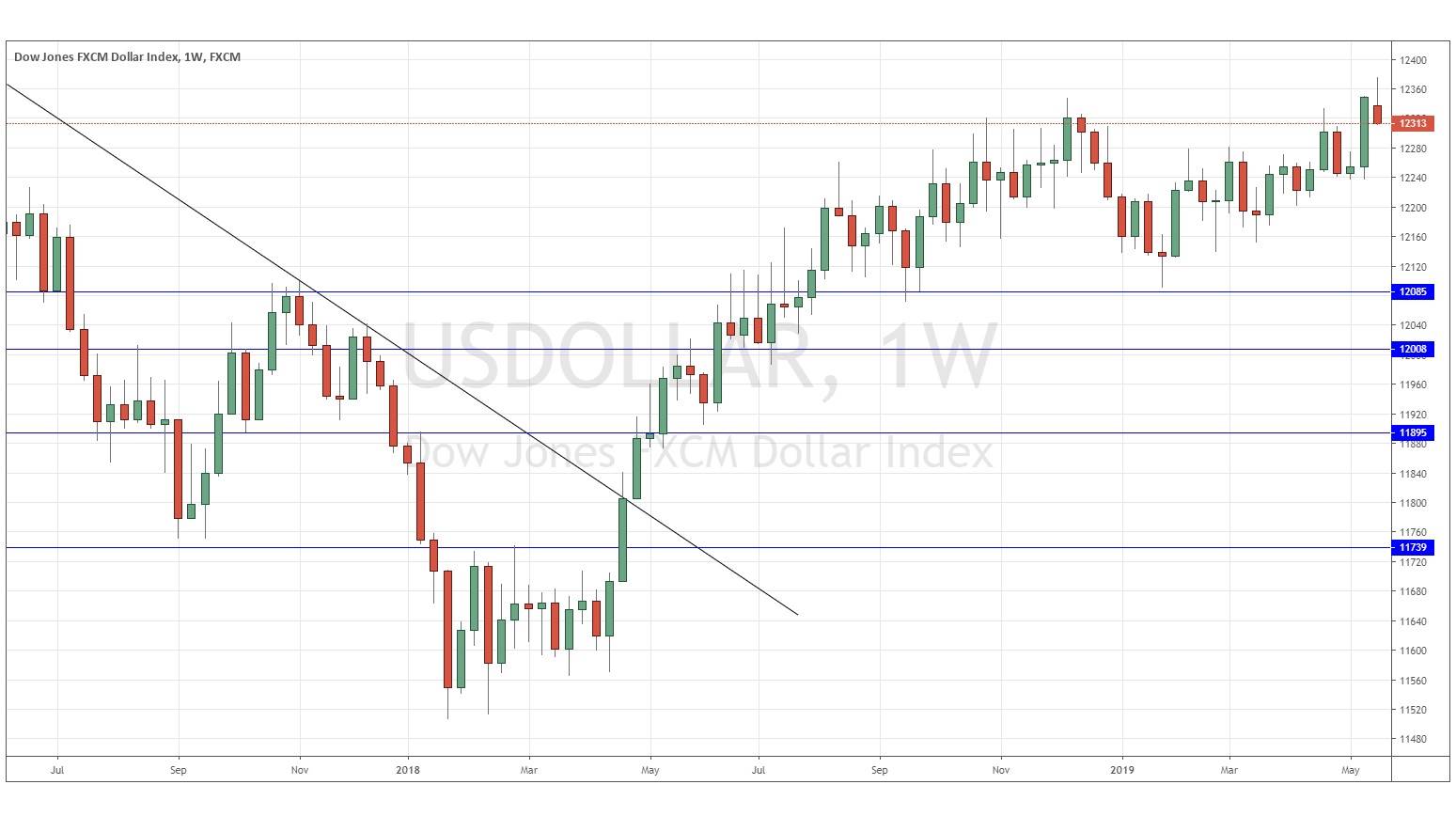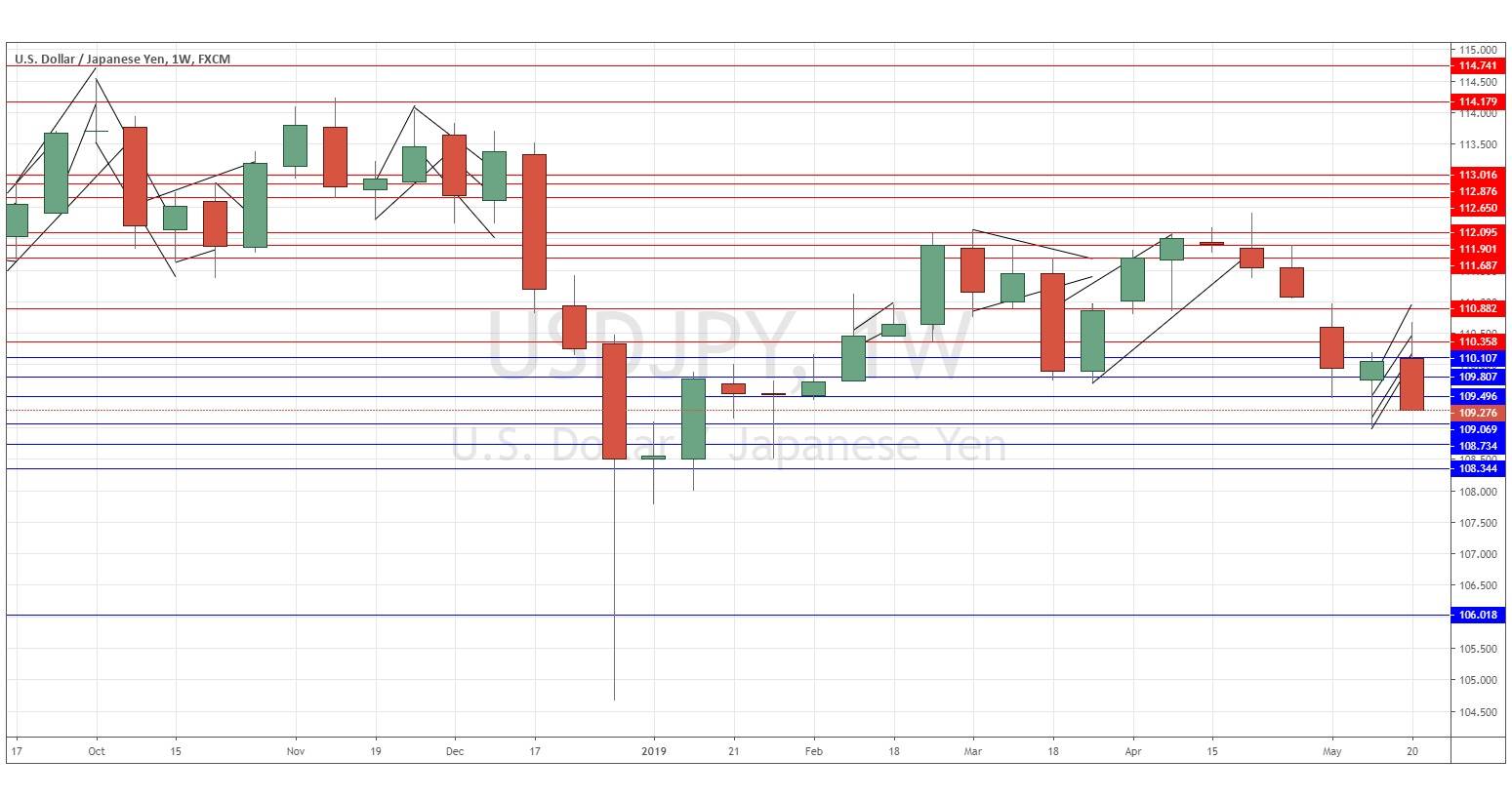The difference between success and failure in Forex trading is very likely to depend upon which currency pairs you choose to trade each week, and not on the exact trading methods you might use to determine trade entries and exits. Each week I am going to analyze fundamentals, sentiment and technical positions in order to determine which currency pairs are most likely to produce the easiest and most profitable trading opportunities over the next week. In some cases it will be trading the trend. In other cases it will be trading support and resistance levels during more ranging markets.
Big Picture 26th May 2019
In my previous piece last week, I forecasted that the best trades would be short GBP/USD and short AUD/USD. Although the GBP/USD currency pair fell by 0.03%, the AUD/USD currency pair rose by 0.86%
Last week’s Forex market again saw the strongest rise in the relative value of the Swiss Franc, and the strongest fall in the relative value of the British Pound.
Last week’s market stayed in “risk off” mode as the U.S. and China continue to fail to resolve their trade dispute.
The Forex market has been quieter, and the picture is very mixed. The Forex market is in flux at present and hard to call.
This week has a similar news agenda to last week, with central bank input due for Canada and New Zealand. However, the week in the Forex market will probably be dominated by news about the progress of the trade dispute between the U.S.A. and China, if there is any new development.
Fundamental Analysis & Market Sentiment
Fundamental analysis has turned more bearish on the U.S. Dollar following the Federal Reserve’s more dovish approach to monetary policy and growth and weaker than expected inflation data. However, the economy is still growing relatively strongly although the stock market has been hit by the trade war with China.
Market sentiment remains risk-off and this seems likely to continue this week, with the safe-haven assets (such as the Japanese Yen and the Swiss Franc) bid while the weaker currencies look mixed and uncertain and as such harder to identify. There are counter-trend movements in most of the broadly weaker currencies right now.
Technical Analysis
U.S. Dollar Index
The weekly price chart below shows that last week the USD Index fell after making a new 2-year high, a relatively small but certainly bearish candlestick which closed right on its low. The price is clearly up over 3 months and 6 months, indicating a bullish trend. However, the short-term momentum is very negative on the greenback so it seems dangerous to be bullish on the USD right away, until there is a technical bullish turn.
USD/JPY
The weekly chart below shows last week saw this pair print a strong bearish candlestick, closing right on its low and being of a relatively large size – these are bearish signs. The price is in a choppy but valid long-term downwards trend, below its levels from both three months ago and six months ago and falling with momentum. This pair is always liable to find support or resistance to halt such a move, but the odds favor lower prices over the course of the coming week. The fact that global stock markets and especially the U.S. stock market looks vulnerable is another sign that the JPY is most likely to strengthen over the coming week.
Conclusion
This week I forecast the best trade will be short USD/JPY.



